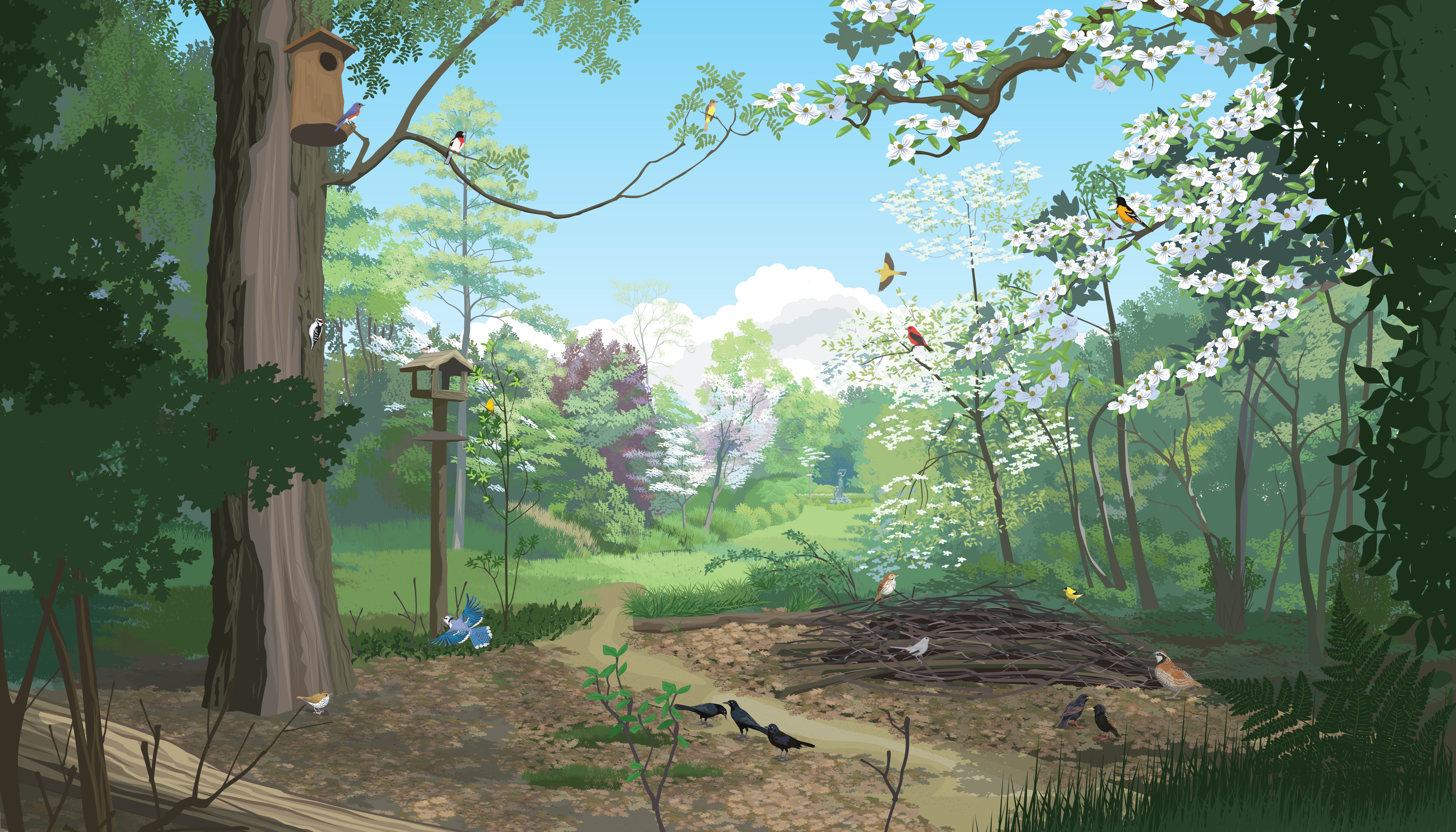Bird Counter
















 Go Birdwatching!
Go Birdwatching!
Click and drag
to explore
to explore
Click on all the
birds you find
birds you find
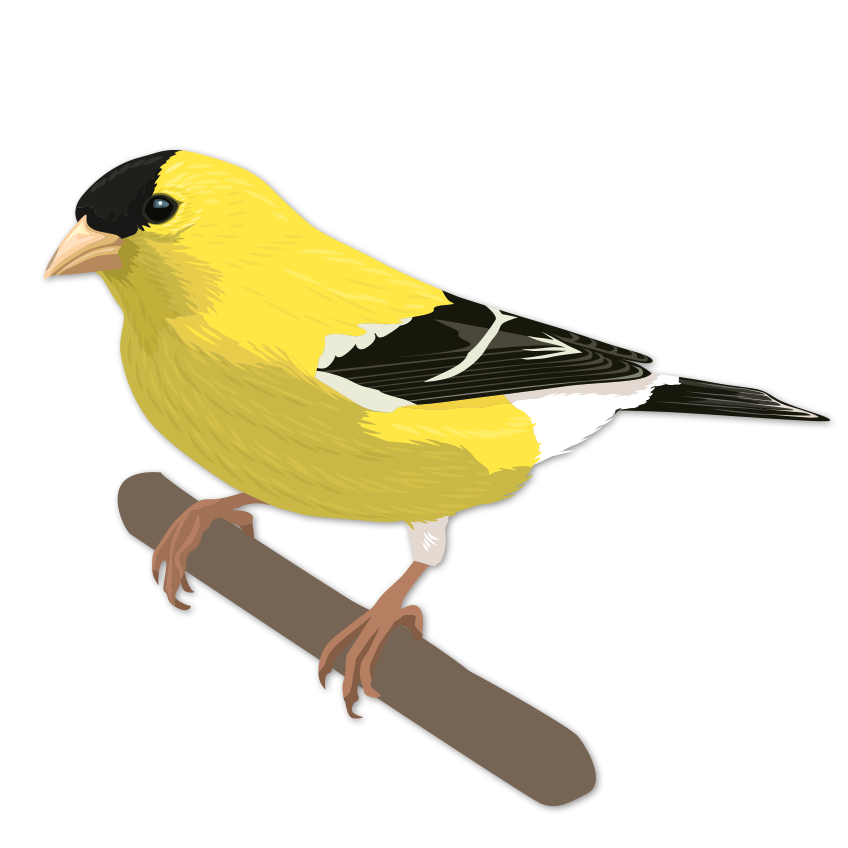
American Goldfinch
Spinus tristis
LISTEN
You might spot this bird looking for food in weeds, shrubs, and trees. Or chirping musically as it bounces up and down in flight. In the spring and summer, the male goldfinch flashes a golden yellow. In the fall, it molts—or replaces—all its feathers with feathers in shades of brown.

Baltimore Oriole
Icterus galbula
LISTEN
When you hear the clear whistle of the Baltimore Oriole, look for the bird with the bright orange and black pattern. It’s color matches the coat of arms of 17th century Lord Baltimore. This bird is common, but their numbers are falling. In the mid-1900s, Dutch elm disease killed the trees where many orioles built their nests.
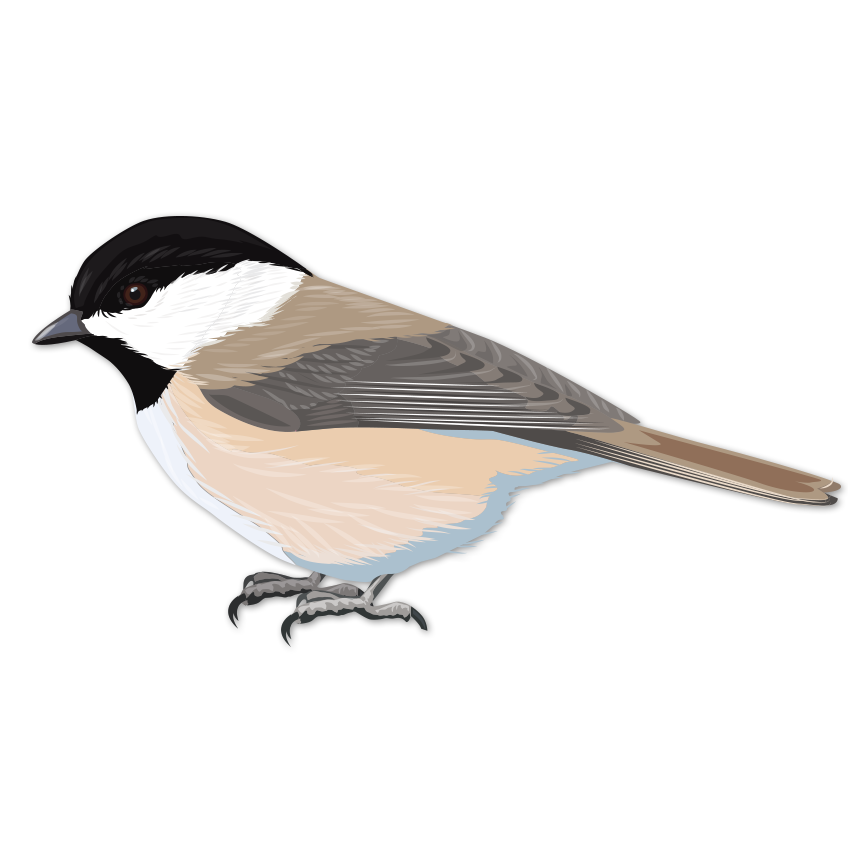
Black-capped Chickadee
Poecile atricapillus
LISTEN
If you spot this bird, stop to watch it looking for food like insects, seeds, and berries. It hops around the ground and between branches looking for a meal. It even hangs upside down if it thinks there’s something under a branch. If you look closely enough, you might see it catch an insect in mid-air.
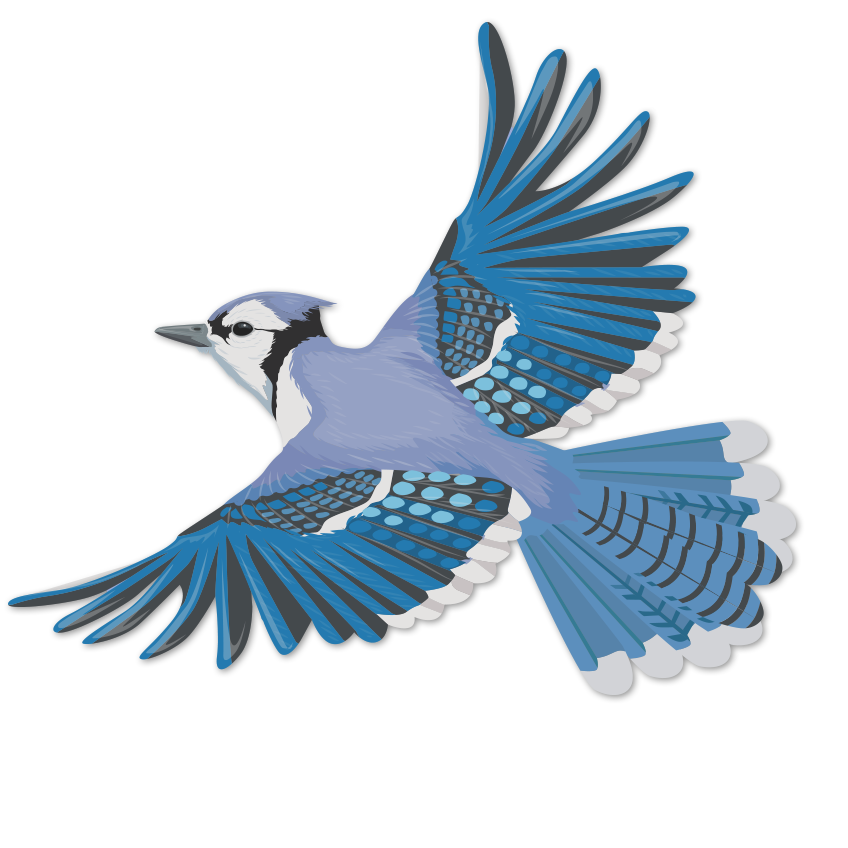
Blue Jay
Cyanocitta cristata
LISTEN
With its brilliant feathers and loud calls, this songbird is hard to miss. When you see one, stop to listen to its many songs: a wild “jay! jay!”, a ringing “squeak,” and lots of clicks and rattles in between. The Blue Jay even imitates calls of other songbirds, like the high-pitched scream of the Red-shouldered Hawk.
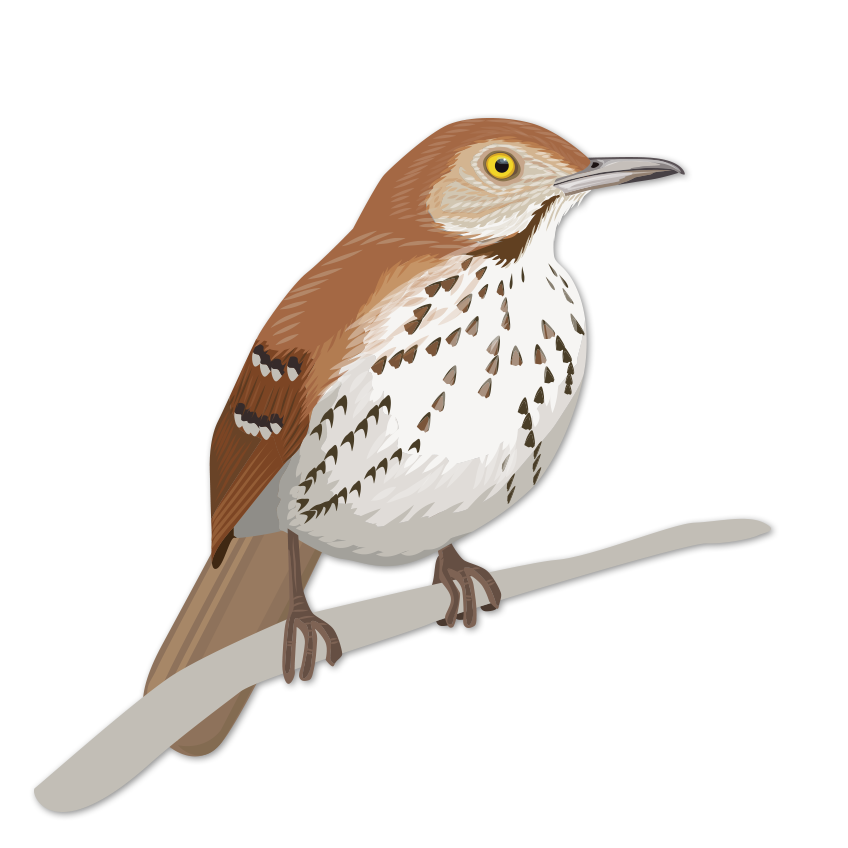
Brown Thrasher
Toxostoma rufum
LISTEN
You’re more likely to hear this bird’s musical song before you see it. This brownish-red bird usually keeps hidden in shrubs. But you might see it feeding near the ground, using its long bill to push away leaves, dig in the ground, or crack open nuts.
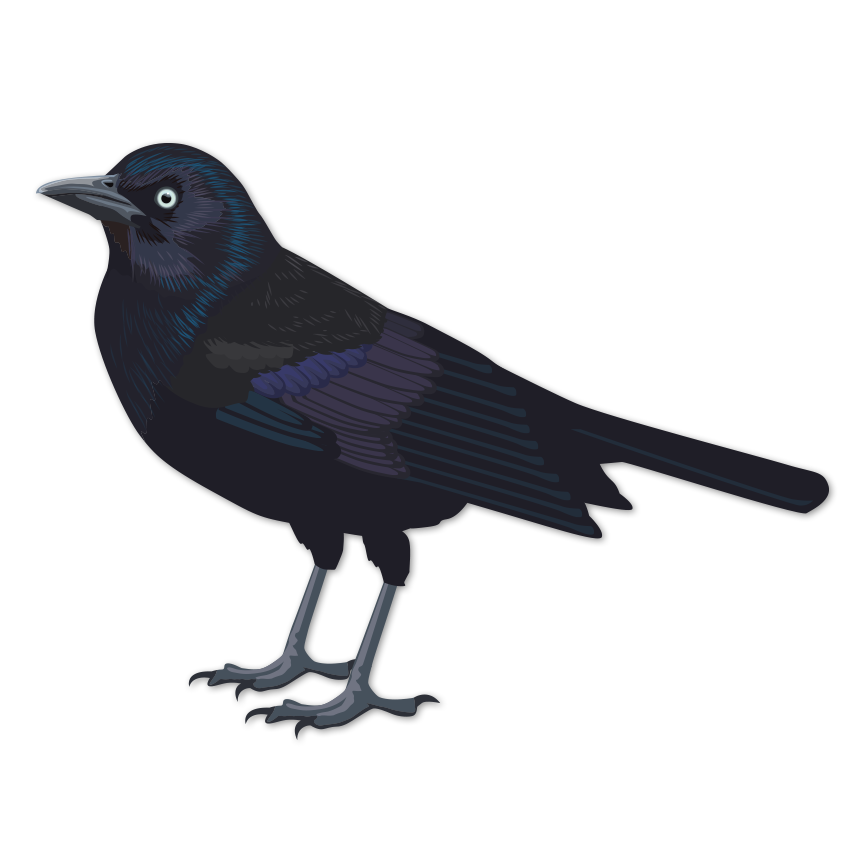
Common Grackle
Quiscalus quiscula
LISTEN
You may have seen this black bird strutting around a yard or park on its long legs searching for insects or seeds. If you see one, chances are there are many more nearby. They feed, fly, and nest in groups, or flocks, of up to 100 birds. With their loud screech, a flock can be very noisy!
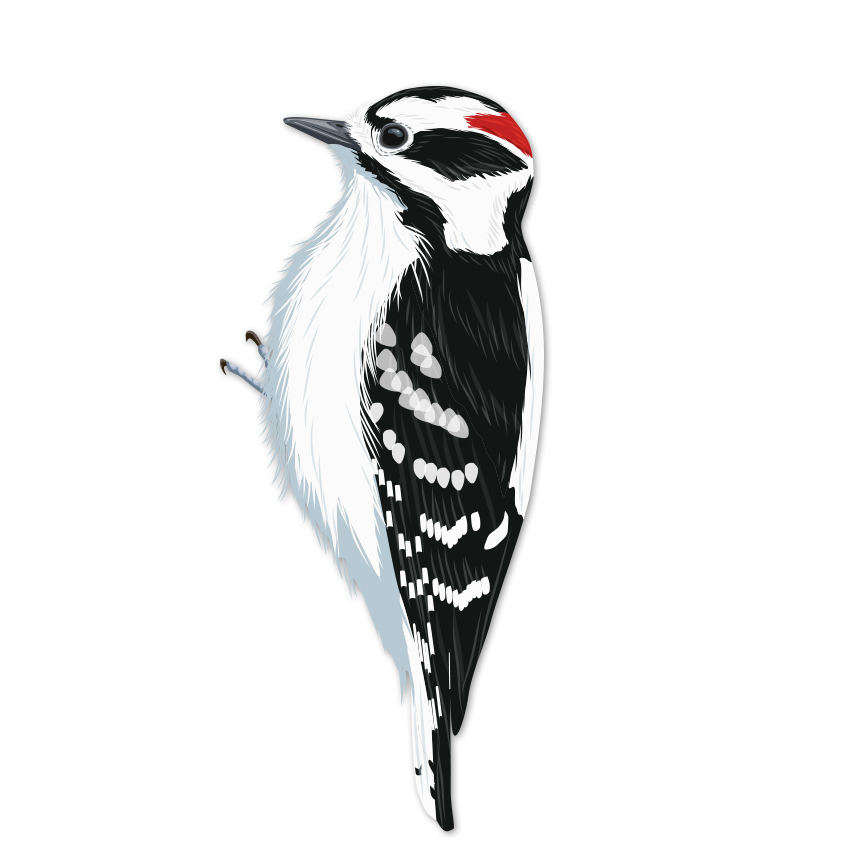
Downy Woodpecker
Picoides pubescens
LISTEN
If you hear a “tap, tap, tap” from a tree, it might be a tiny woodpecker drilling for its next meal or digging a hole for its nest. Or it might be drumming to tell other birds this territory is taken! Woodpeckers use their short, sharp bills to dig for insects in tree trunks, big limbs, reeds, and even in the ground.
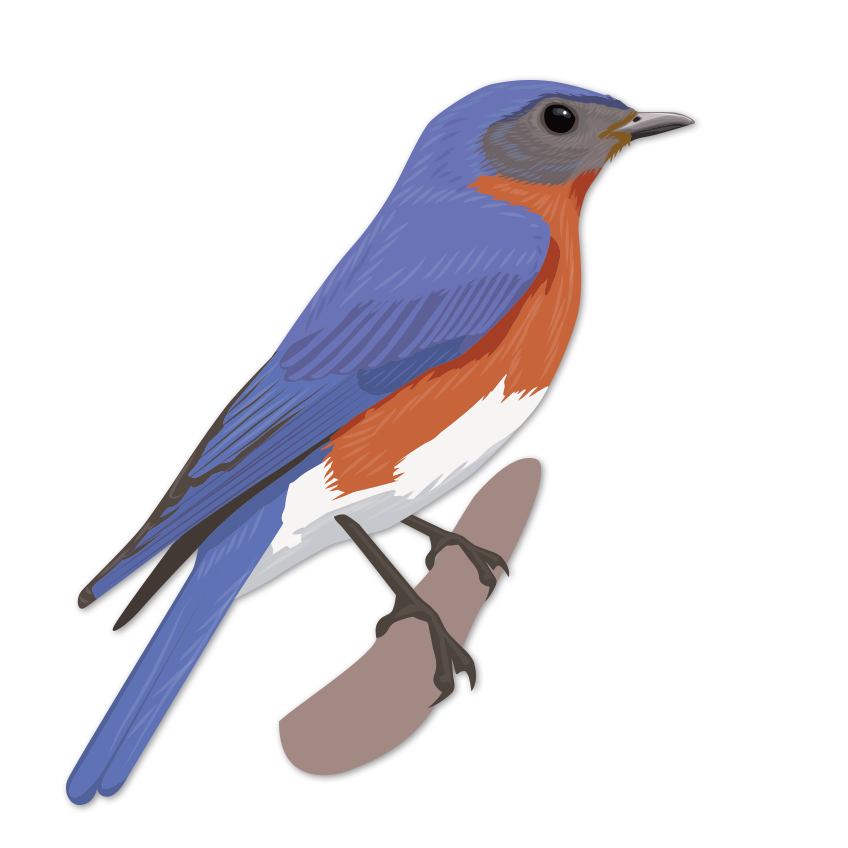
Eastern Bluebird
Sialia sialis
LISTEN
If you spot this pretty songbird, try and watch it flutter back to its nest. Its nest is usually close to the ground in a tree hole or birdhouse. Bluebirds build nests out of weeds and twigs, with soft grass or feathers inside. If you see a male and female perched together, you might catch them preening each other’s feathers.
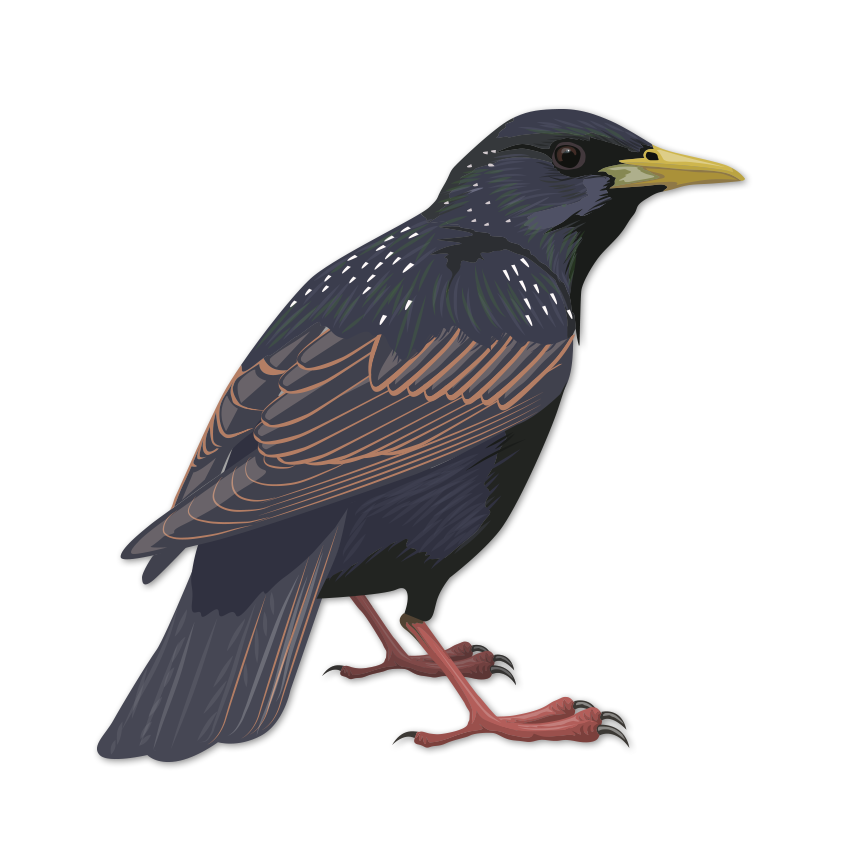
European Starling
Sturnus vulgaris
LISTEN
This bird was brought to North America in 1890. Today, you can spot it nearly everywhere. In the fall and winter, starlings travel in huge flocks. Then they break up in the spring to breed. These songbirds have lots of different calls, and can even mimic other bird songs. Starlings often nest in holes made by native birds like bluebirds and woodpeckers.
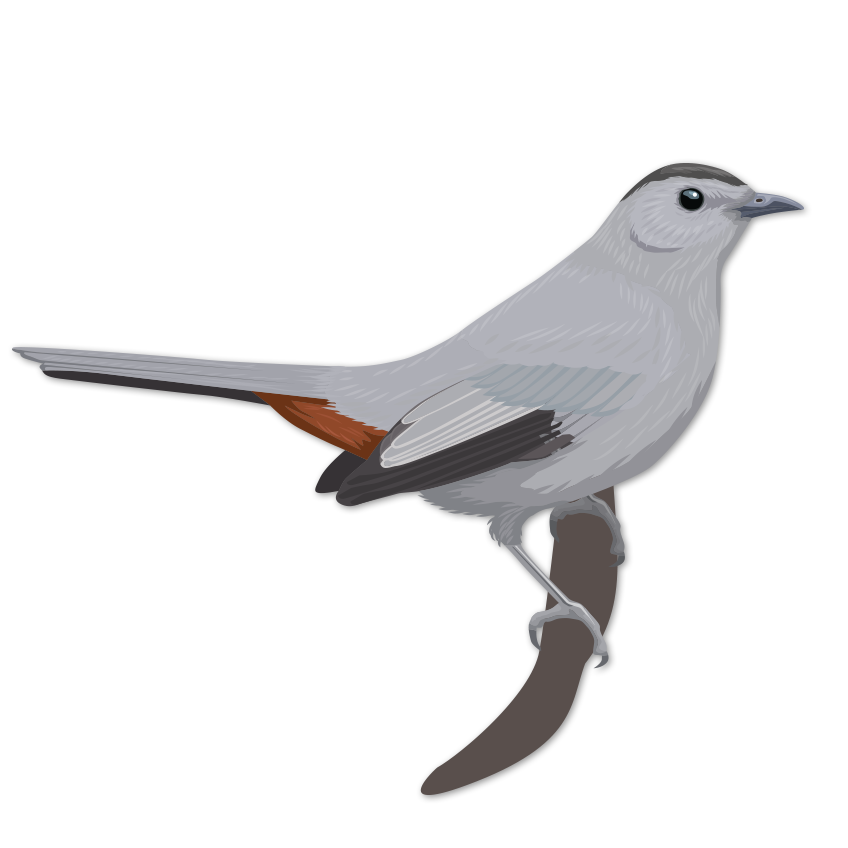
Gray Catbird
Dumetella carolinensis
LISTEN
This bird may not be the first to catch your eye—until it starts singing! The Gray Catbird has lots of different chirps, squeaks, and calls, including the long “meeew” that gives this bird its name. When a male courts a female, it may chase her, bow, or even turn around to show off the chestnut (reddish brown) patch of feathers under its tail.
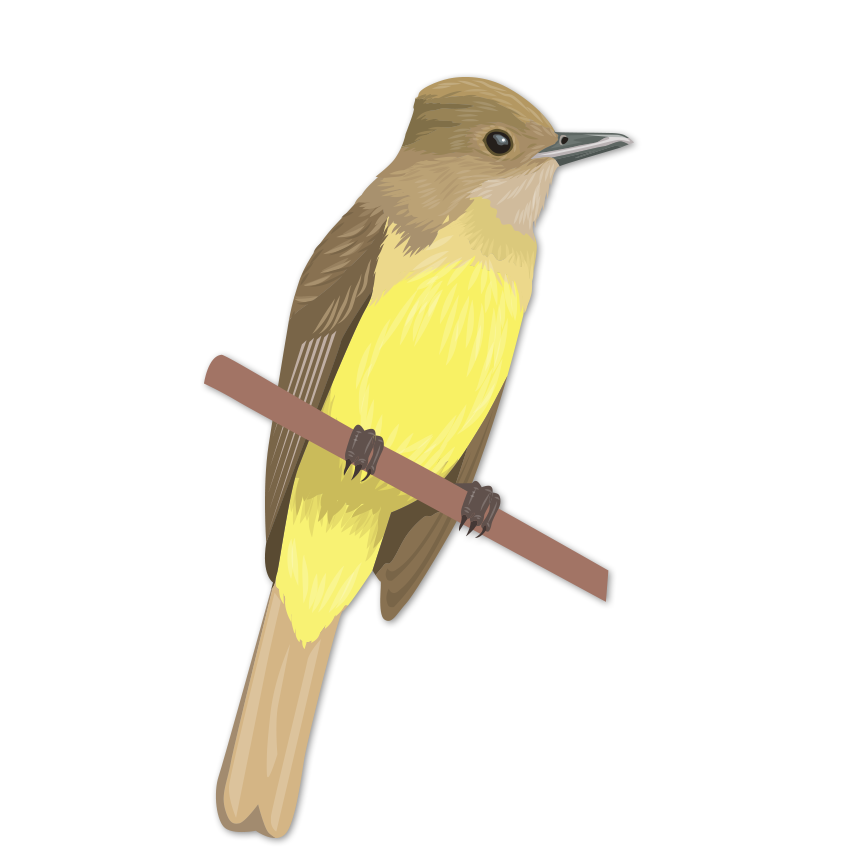
Great Crested Flycatcher
Myiarchus crinitus
LISTEN
When you hear the loud “weep!” of the Great Crested Flycatcher, you might have to look way up in the treetops to see it. This flycatcher usually nests in tree holes high above the ground. They build their nests with weeds, grass, strips of bark, and other material. They often line the inside with pieces of snakeskin or clear plastic.
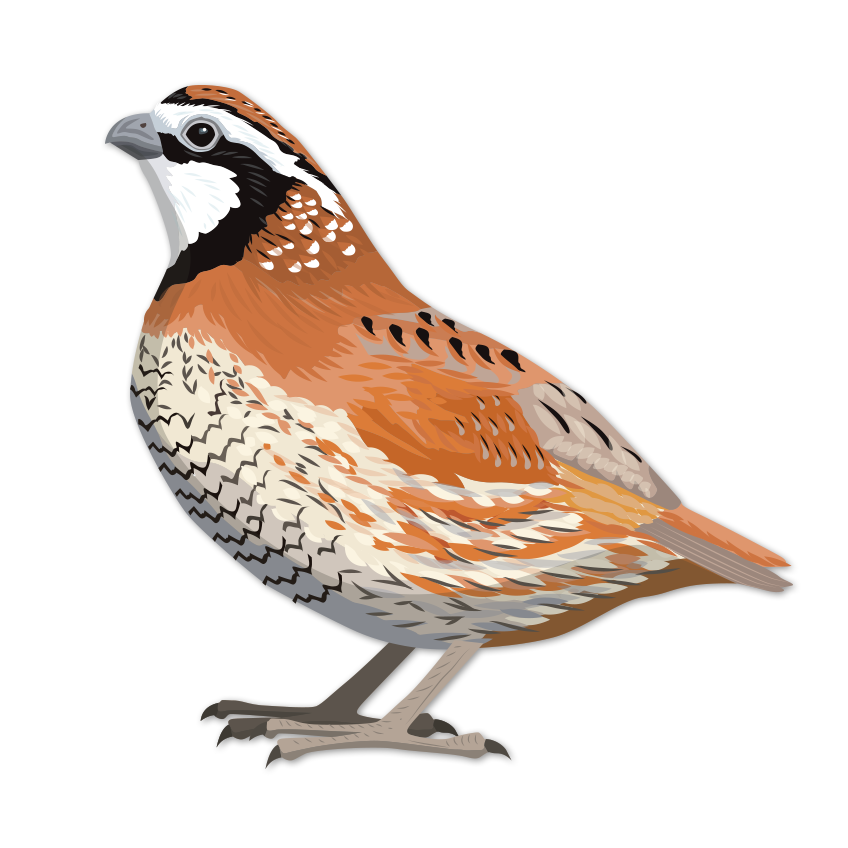
Northern Bobwhite
Colinus virginianus
LISTEN
Some say the whistled calls of this bird sound like, “bob-white!” You might spot one of these plump birds looking for food in a grassy field or low shrubs. These birds are slowly disappearing, especially in the northeast. No one knows why for sure. Habitat loss, new populations of fire ants, and harsh winters may be a few reasons.
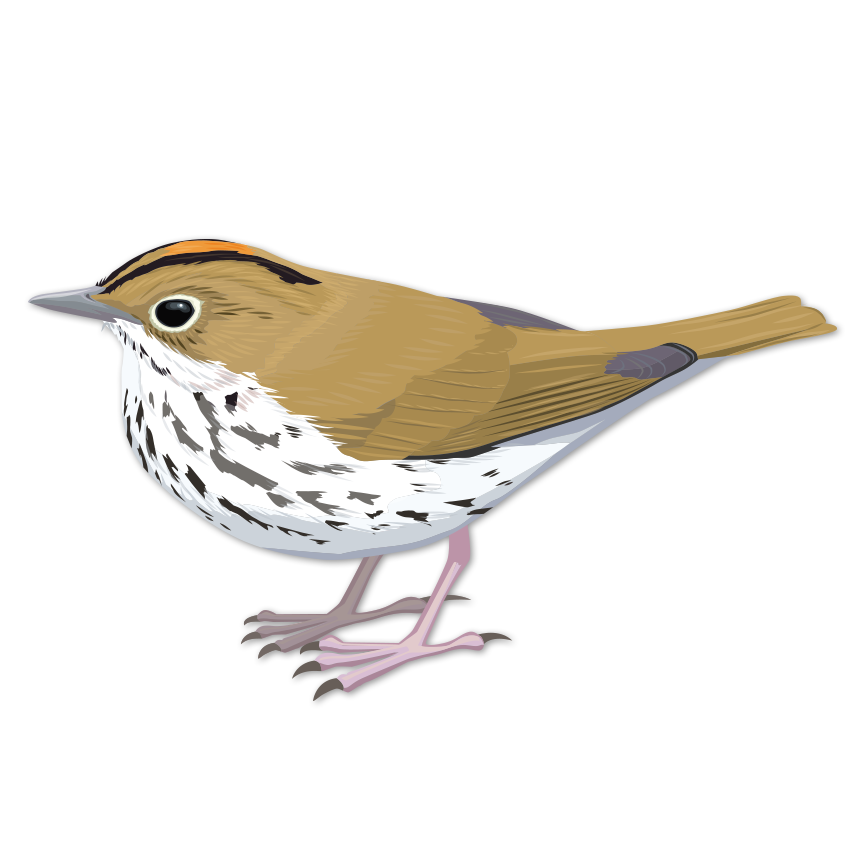
Ovenbird
Seiurus aurocapilla
LISTEN
Next time you’re in the woods on a summer day, listen for the call, “teacher! teacher!” You might spy this bird walking along the forest floor. If you do, search the ground for a domed nest—like a little igloo made of grass and leaves. In the summer, this nest protects baby birds while both parents search for food.
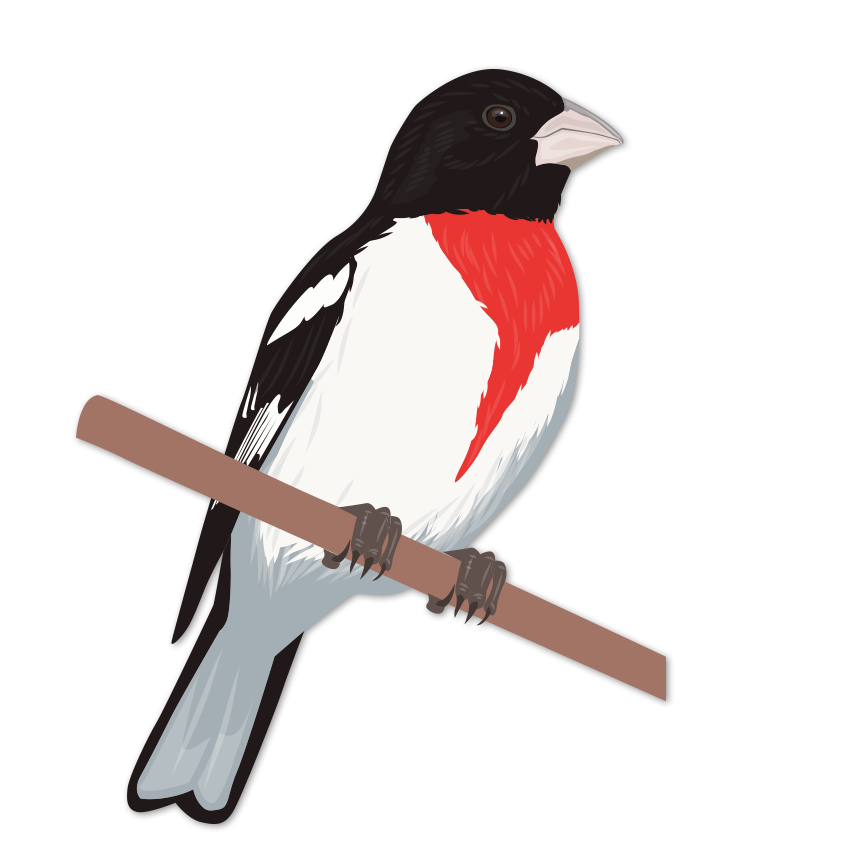
Rose-breasted Grosbeak
Pheucticus ludovicianus
LISTEN
As you can see, this bird is named for the pink or red patch under the male’s throat. If you live near the woods in the eastern U.S., you may hear its sharp, musical whistle in the spring and summer. The male Rose-breasted Grosbeak sings to protect its territory. The female often sings when building her nest.
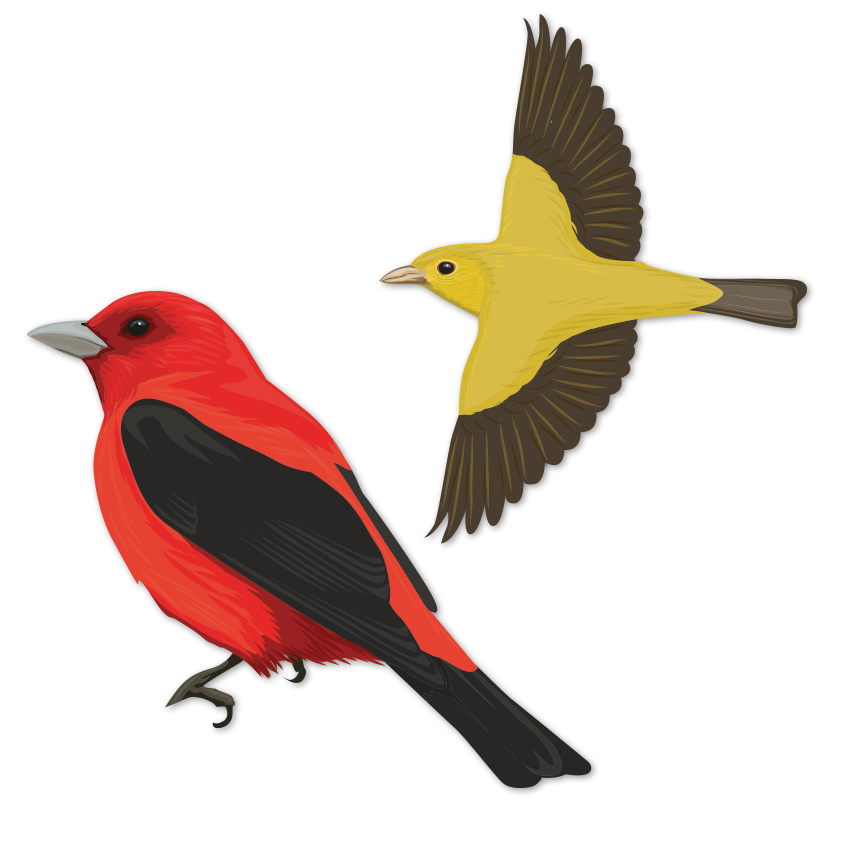
Scarlet Tanager
Piranga olivacea
LISTEN
In the spring and summer, the male Scarlet Tanager is quite a sight, with its bright red body set off by its black wings and tail. But this bird can be hard to spot since it usually feeds high up in the forest treetops. The females are even tougher to find, with their yellow-green feathers that blend in with the leaves.
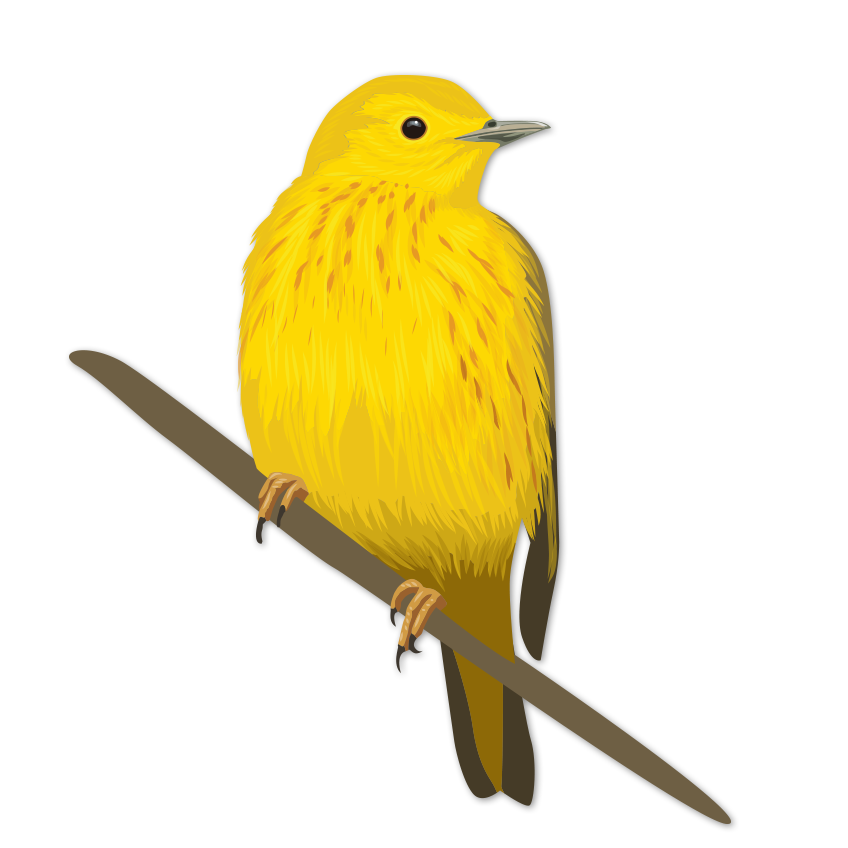
Yellow Warbler
Setophaga petechial
LISTEN
Some say this bird’s bright, musical song sounds like “sweet-sweet-sweet, sweeter-than-sweet.” Yellow Warblers usually live along forest edges, streams, marshes, and other watery places. If you spot one, look on or near the ground for its cuplike nest. Inside, you might see 3–6 greenish white, speckled eggs.
Yay! You've found them all!
You can continue to explore the birds in this sanctuary. Just click on them in the counter.
